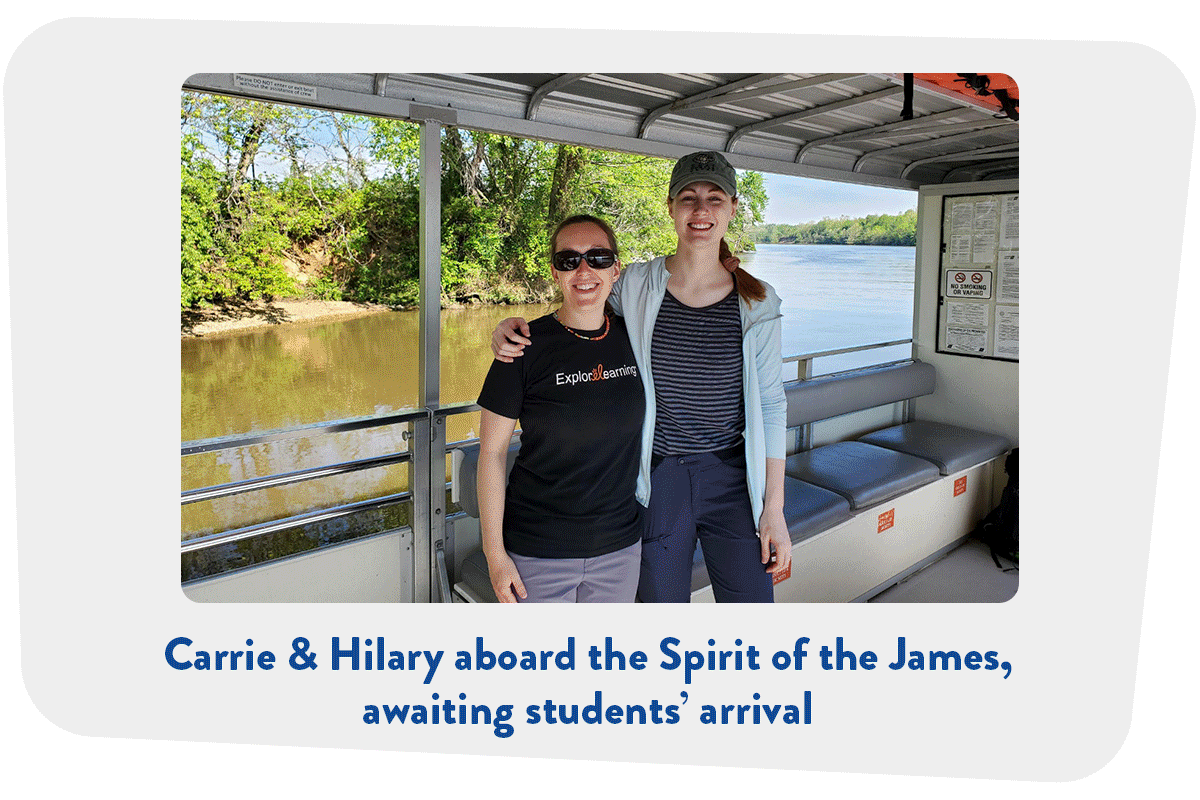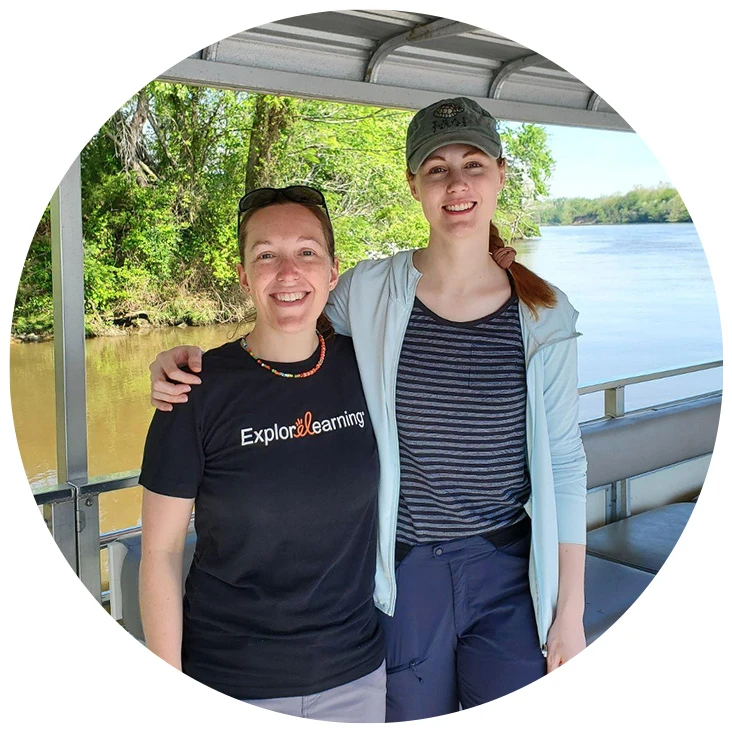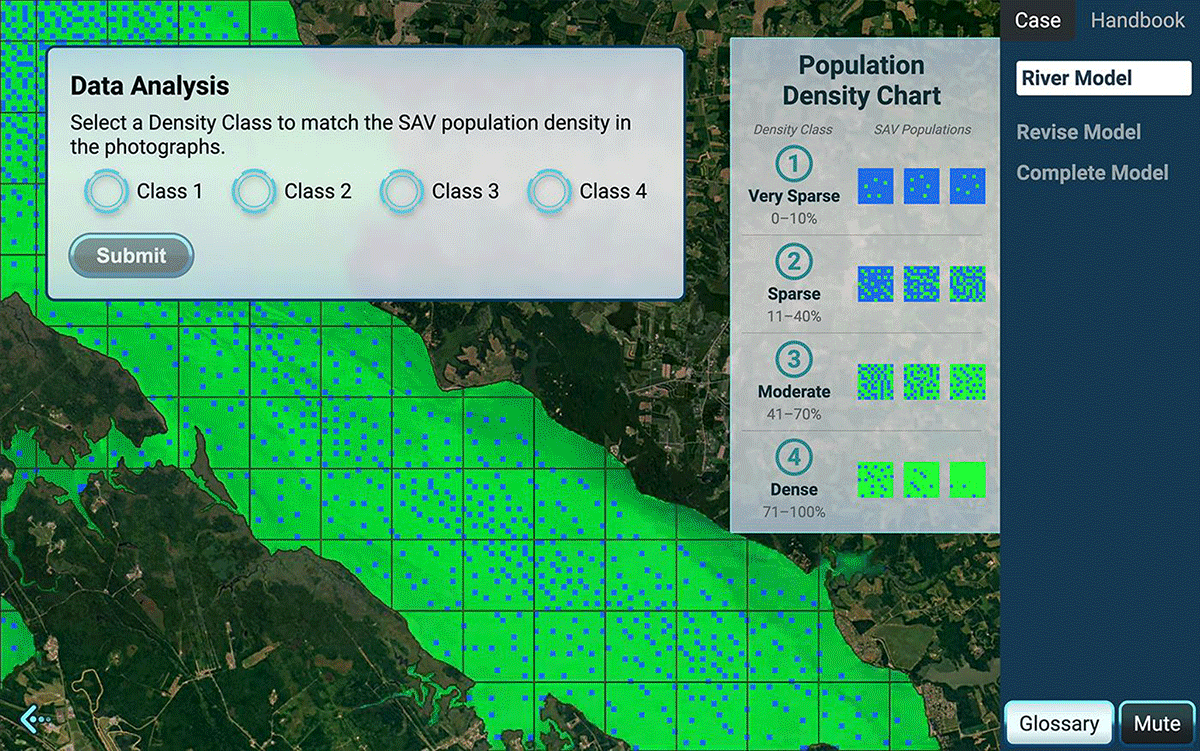Gizmos STEM Case Team Field Trip: A Day on the James River

ExploreLearning recently developed a new Gizmos STEM Case in partnership with the James River Association, an environmental conservation and education non-profit organization based in Richmond, Virginia. For our team, bringing authenticity and real-world experiences to teaching watersheds and river ecosystems meant one thing—a field trip!
Why take a field trip?
Two Gizmos STEM Case design team members, Learning Designer Carrie Adler and Art Director Hilary Pierce, were invited to observe a James River Ecology School program for fourth-grade students at Presquile National Wildlife Refuge in Chester, VA. The refuge's primary purpose, located on Presquile Island in the James River and only accessible by boat, is to preserve habitat for migratory birds.
They had goals in mind for their visit:
- Gathering photos and video of the natural environment (vistas, riparian buffers, living shorelines, examples of erosion and sedimentation, turbid water, submerged aquatic vegetation (SAV), fish, and other wildlife)
- Experimenting with data collection methods (trawling for fish, measuring dissolved oxygen levels, measuring turbidity, counting fish)
- Learning more about the James River, ecology school programs, and the kinds of background knowledge and questions that students bring to the river
Experiencing the James River Ecology School Program
Carrie and Hilary prepared for the day as students bounded off the bus and formed a circle to meet the James River education staff members and volunteer Naturalists leading the program. Most students brought enthusiasm and much background knowledge of their local watershed and how human actions impact river ecosystems, but several students expressed trepidation about going out on the water. Some even shared that it was their first time on a boat!
Learning about the James River’s ecosystem
As the day progressed, many students challenged, if not conquered, their fears of boats, insects, spiders, black rat snakes, and stepping on coyote feces (two packs of coyotes are said to live on the island). They were genuinely curious as they explored their surroundings.
- “It’s an ostrich!” (err… osprey!)
- “Are there any alligators or crocodiles?” (no)
- “Are there bears here?” (no)
As the group toured part of the lower James River, the organization's 40-foot educational pontoon boat, the Spirit of the James, ferried students to the island refuge. There, they were greeted by an intern for the Fish and Wildlife Service who lives on the island full-time to support education and conservation projects. While on the island, they observed a wide variety of wildlife and plants.
- Wildlife:
- Osprey
- Bald eagles
- Cormorants
- Muskrat
- Fish: mostly catfish!
- Plants:
- A few examples of submerged aquatic vegetation (SAV)
- Field of Johnson grass (invasive species) on land
- Living shoreline improvements (trees planted)
What about the abiotic factors?
On the day of the field trip, they investigated abiotic factors, which are the inorganic components of a habitat.
- Dissolved oxygen level of 9 parts per million (ppm).
- For context, for most fish, 4 ppm is the minimum; 8 ppm is great.
- For comparison, the air we breathe contains an oxygen level of approximately 200,000 ppm!
- Turbidity (cloudiness of the water): approximately 20 NTUs; this means that visibility was little more than a foot into the water. Excess sediment in the water blocks sunlight from reaching the river bottom, making it difficult for SAV to grow.

The importance of a healthy James River
On the boat trip back to the mainland, students discussed the characteristics of a healthy river, how human actions impact the river ecosystem, and why a healthy James River is important. Students promised to take home and share at least one thing they learned from their day on the James.
We all live in a watershed
This STEM Case aims to provide an in-classroom experience that helps students prepare for their outdoor meaningful watershed educational experiences (MWEEs) and inspires students to pursue similar environmental action projects in their local communities!
A watershed is an area of land that drains into a body of water. Human activities on the land affect the movement of water. For example, vegetation and other pervious surfaces absorb and filter water, while impervious surfaces such as asphalt repel water, leading to increased runoff and erosion with negative impacts on river water quality.
Coming Soon: A new Gizmos STEM Case about watersheds and river ecosystems
In the STEM Case, students become members of the River Watch, a group of citizen scientists who monitor water quality and ecosystem health in the James River. Although this STEM Case focuses on a particular species within a particular watershed, the science concepts and design solutions involved in solving the shad population problem in the James River are broadly applicable to all watersheds. And everyone lives in a watershed! That’s just one reason why a watershed lesson is so important.

A note of appreciation from Carrie and Hilary
We couldn’t have developed this STEM Case without the support of the great folks at the James River Association! We offer a sincere thank you to Senior Education Manager Matt Scott Stone, former Director of Education Nat Draper, Director of River Ecology Jameson Brunkow, and the many instructors, volunteers, naturalists, and of course, our boat captain. They have generously given their time and expertise for several months, from initial conception through research, design, and production of this STEM Case. Find out more about the James River in the State of the James Report.

Take a trip on the James River to monitor water quality and ecosystem health through the STEM Case.

Are you interested in learning more about Gizmos? Take a free trial and see the impacts of real-world learning in your classroom.
Start My Trial